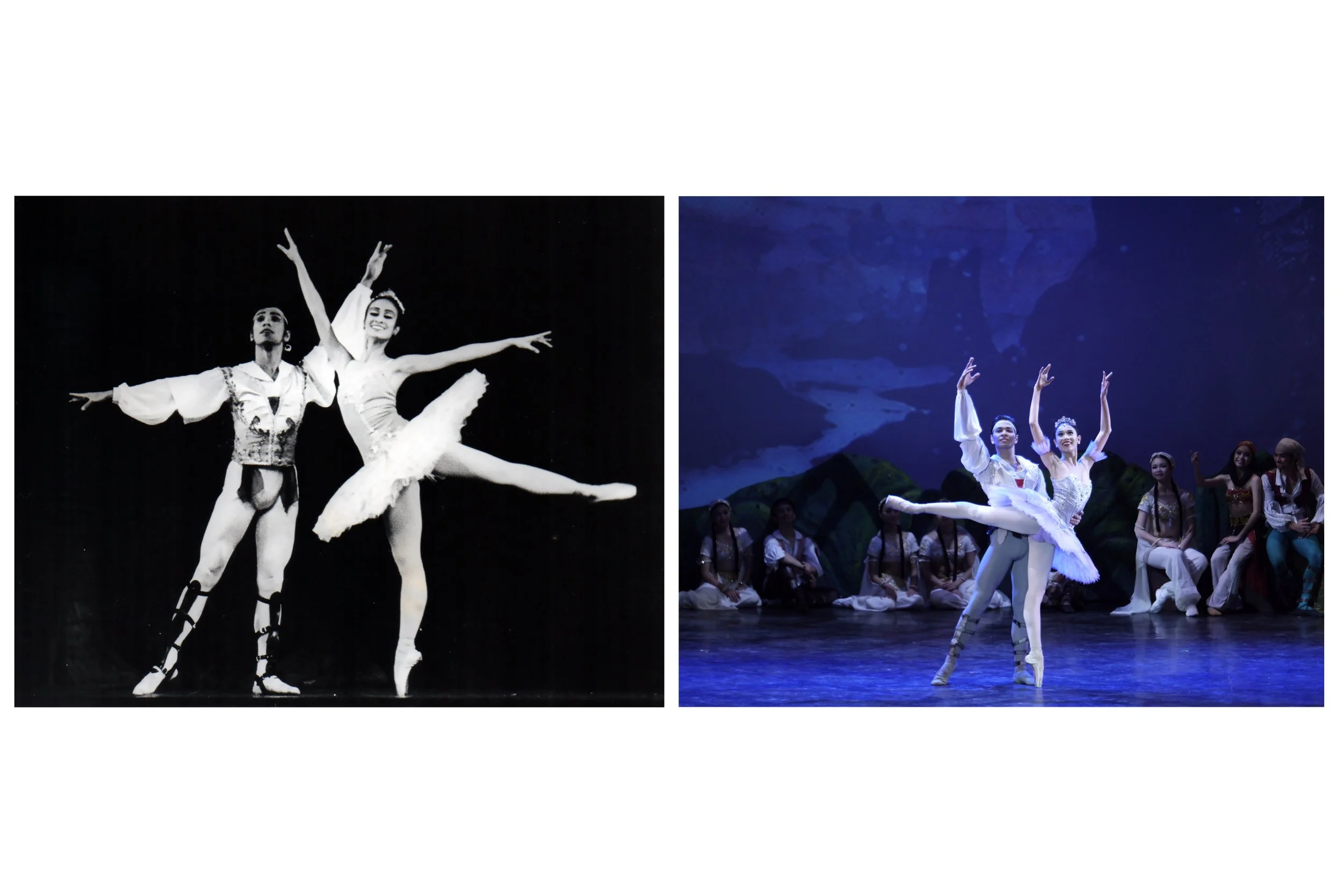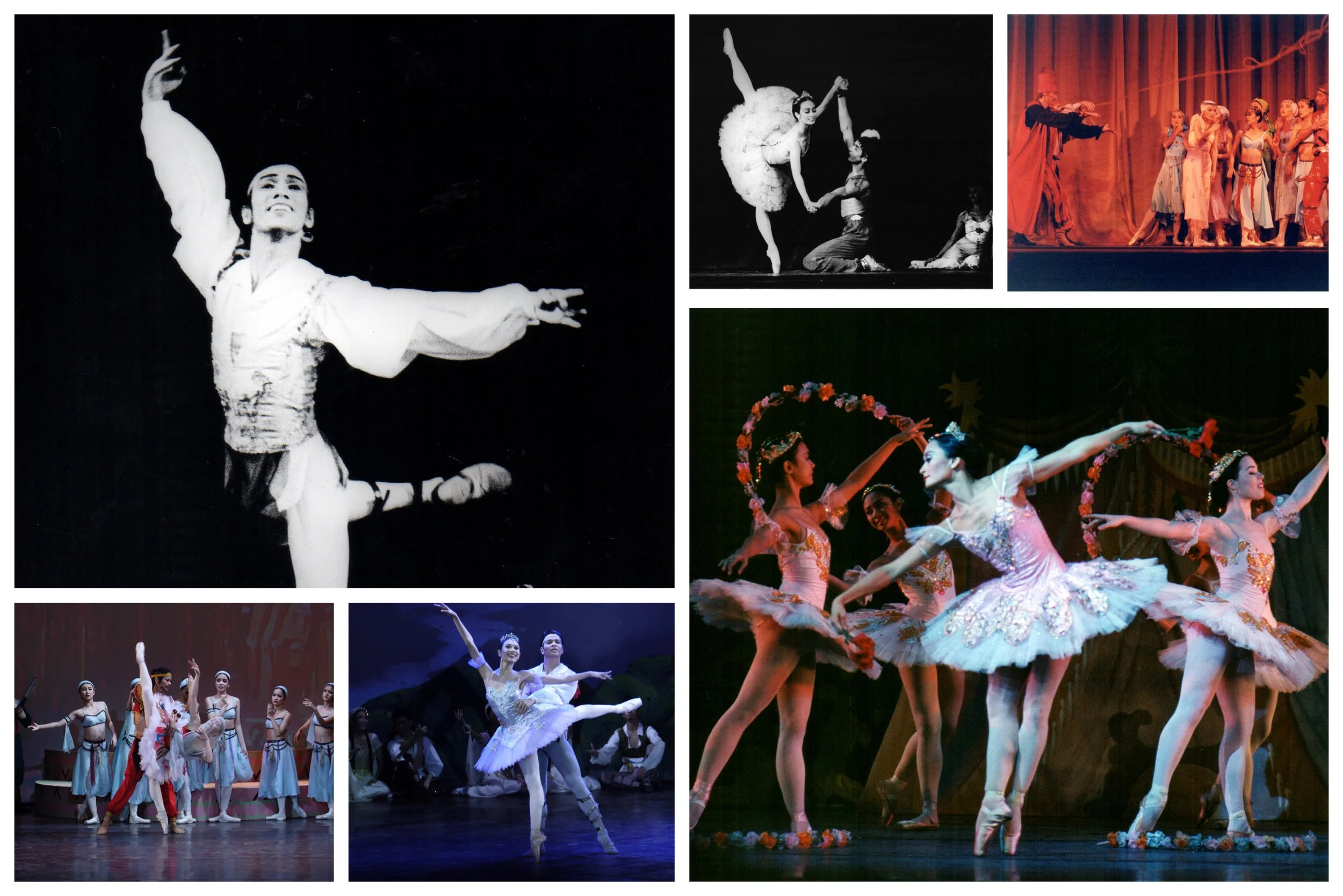‘Le Corsaire’ 20 years after: Osias Barroso on sustaining Ballet Manila’s pirate breakthrough
Ballet Manila co-artistic director Osias “Shaz” Barroso says the company’s strict adherence to standards has allowed them to perform Le Corsaire consistently over two decades. Photo by Jimmy Villanueva
By Jv Ramos
To regularly include a full-length classical ballet in one’s season repertoire is one thing, but to be the company that introduced a Russian classic to the Philippines and still perform it excellently after two decades is nothing short of incredible.
Such is the case of the classic Le Corsaire and Ballet Manila. Brought to Manila in 1998 – the year the company was in its third performance season – the pirate adventure celebrated many firsts, including its debut in the country and in the region.
Having recently wrapped up their latest staging of Le Corsaire – the eighth time in 20 years – Ballet Manila co-artistic director Osias “Shaz” Barroso sits down for an interview to look back at the company’s history with the colorful pirate epic.
The full-length Le Corsaire was first brought to the Philippines in 1998 in a joint production of Ballet Manila and Krasnoyarsk Ballet Osias Barroso and Pamela Asprer (left), as Conrad and Medora, danced alongside their Russian colleagues. Photo by Ocs Alvarez
“We wanted something new,” Shaz recalls when asked how Le Corsaire became part of the company’s repertoire in its early years. “Everybody was doing Giselle, Swan Lake and Coppélia, the popular ballets at that time. Le Corsaire had never been done here, so we decided to do it. We were the first [company] to have brought in Corsaire to the Philippines. And I think even in Southeast Asia, we were the first one.”
Unlike the other classics, which Shaz had either seen or performed before, Le Corsaire was very new to him in the 1990s, as well as for the other BM artists. Curiously, what would have been his first-ever Conrad with his “forever” partner Lisa Macuja-Elizalde in her first-ever Medora didn’t materialize as planned.
“Corsaire was the first ballet that Lisa and I didn't dance together. It was scheduled long before [its performance dates], so we rehearsed it together; but then, we found out that Lisa was pregnant with Missy.”
Shaz, therefore, had to re-learn his parts with a new Medora, BM pioneer Pamela Asprer. “Because we were only 12 dancers at that time, our first Le Corsaire was a collaboration with the Krasnoyarsk Ballet. [How it worked was] we rehearsed our parts, and they [the Krasnoyarsk] rehearsed theirs, and when they came here, we rehearsed it all together. They were here for a week, which is already long for us dancers (to rehearse).”
Ballet Manila has now staged Le Corsaire eight times – in 1998, 2000, 2002, 2004, 2008, 2010, 2013 and 2018. Souvenir programs and posters of the shows are stored in the Ballet Manila Archives.
He adds that since the cast was made up of two ballet companies, the main roles were split. Conrad and Medora, for example, came from BM, while Ali and Birbanto were done by Krasnoyarsk danseurs.
“What I can’t forget about that time were the classes. I remembered it to be one of the most difficult classes,” comments Shaz. “Inurirat talaga ni Tatiana [Udalenkova, Lisa’s Russian teacher] ang mga girls (Tatiana was very uncompromising when it came to training the girls). Everything had to be done on one leg… Talagang nakakapagod (It was very exhausting)! But Pamela and Aileen [Gallinera] did very well, considering it was their first pas de deux.”
But how was BM’s first Le Corsaire for Shaz himself? “Well, feeling ko, ako ang star noon (Well, I really felt that I was a star back then),” the retired danseur jokes. “Ako kasi ang pinaka-senior na danseur at that time (That’s because I had the most experience at that time).” He reveals that by the time this collaborative production took place, he had already danced with the Krasnoyarsk Ballet many times when he and Lisa would go on performance tours to Russia.
Osias Barroso and Lisa Macuja-Elizalde rehearsed for their debut as Conrad and Medora in 1998, but were ultimately unable to perform together when Lisa became pregnant with her first child. The pair finally headlined Le Corsaire when Ballet Manila restaged it in 2000. Photo by Ocs Alvarez
“Pareho kami ni Lisa (Lisa and I are similar). We danced our first full-length of Don Quixote and Giselle abroad. She did hers with the Kirov Ballet, while mine was with the Krasnoyarsk. I remember doing my first full-length Don Q with them in 1992. I had to learn the full-length in four days! I even had to borrow their costume… We also had a tour of Swan Lake with them here in 1996, which was Lisa’s 10th anniversary.”
Their shared time onstage in Russia and the Philippines led to smooth rehearsals and well-executed shows of Le Corsaire. “Our performances at the Meralco Theater went well, considering everything,” confirms Shaz. “Naaalala ko nga na sobrang nakakapagod ang biyahe (I remember the exhausting trips we had to take for our shows). Rehearsals were done here in the studio [in Pasay City] and we had to travel to Meralco [in Pasig City].”
If it had not been for the strenuous training they had to undergo and the setbacks they had to overcome (such as casting changes, unfamiliarity with the piece, and being a company of only 12), then BM probably wouldn’t have developed the high standards and discipline required to restage the pirate ballet – now for a record eight times.
“What I like about Le Corsaire is maraming nabibigyan ng break dito (a lot of dancers are given the opportunity to shine),” expresses Shaz. “Le Corsaire has many principal roles. Medora, Gulnara and the Odalisques are all principal roles. And then, for the boys, we have Conrad, Ali, Lankadem and Birbanto.”
Meticulous like BM’s Russian mentor Tatiana, Shaz, however, is quick to add that Le Corsaire isn’t all about parading a handful of dancers’ mastery of technique. “It’s also theater. It’s a story ballet, so the mimes in between are very important,” he stresses. “When it comes to restaging, it’s very easy nowadays for companies since everyone can watch videos on their phones. But if it’s Le Corsaire, I always tell my students to learn from the way Lisa and I performed it [in 2000]. In recent versions, the essence is lost, especially that of the mimes.”
To assure that BM’s recent restaging of the pirate piece had both the ballet technique and story quality to it, Shaz instructed those undertaking the principal roles to really listen to the music, rather than just robotically executing the steps and the mimes.
Gerardo Francisco, now principal dancer, has taken on the role of Ali in every staging of Ballet Manila’s Le Corsaire since 2004. Photo by Jojo Mamangun
“I’m very thankful that we have the likes of Geri [principal dancer Gerardo Francisco, who has been portraying Ali for 15 years] and Romeo [principal dancer Romeo Peralta, who recently debuted as Birbanto, and has been in every restaging of Le Corsaire since 2000 – as a soldier, as a pirate and as Lankadem], as well as Jonathan and Eileen [BM’s ballet master Jonathan Janolo and ballet mistress Eileen Lopez]. They know what the old BM is like, how Le Corsaire should really be performed, so the essence of the ballet lives on.”
Asked if he’s satisfied with BM’s restaging of the adventure ballet in its 23rd season, Shaz breaks down the strengths and weaknesses of the dancers (such as mastering partnering, increasing one’s presence, giving importance to the mimes, being more solid when it comes to technique).
He notes that principal dancer Abigail Oliveiro and soloist Mark Sumaylo (who played Medora and Conrad), in particular, really listened to his instructions and took the time to process the motivations of the characters which allowed them to effectively mime the story. The result was a well-received performance with the audience clearly appreciating the comedic aspect of the ballet.
Geri and Romeo, he notes, have always been such reliable dancers and their performances naturally adhered to the standards of the company. Shaz points out that Geri was really born to be Ali — he has been performing the role in every staging of Le Corsaire since 2004!
Le Corsaire, says Osias Barroso, is one of Ballet Manila’s treasures, as it allows dancers to take on its many principal roles. In one of the 2018 shows, Elpidio Magat (Lankadem) and Nicole Barroso (Gulnara) dance the pas d’esclave in Act 1. Photo by Giselle P. Kasilag
He has a similar observation about principal dancers Rudy De Dios and Elpidio Magat Jr. who alternated as the slave trader Lankadem, citing that the role was actually one of the most difficult to portray given the complexity of the character.
Company artist John De Dios, however, was the surprise of the show, according to Shaz. Coming from an injury, John was not even on the roster of dancers slated to take on a major role in the production. But after watching him during Ballet & Ballads tour performances, Shaz felt that he was ready to take on a challenge. So he became a last-minute addition to the cast and was able to seize the chance with a well-performed — and well-applauded — Ali.
As a whole, Shaz is pleased with how BM has carried on the tradition of Le Corsaire.
“It really is one of the company’s treasures, kasi nga ang daming boys nito (due to the amount of male dancers needed for it). I don't know if other local companies can stage this since it requires many danseurs,” reveals Shaz. “Also, from what I know, BM's the only one doing this version of Le Corsaire. There's another version from the Bolshoi, which is very different.”
More than introducing Le Corsaire to the Southeast Asian region, therefore, BM has also played a crucial role in keeping this version of the pirate story alive all these years. “With every Le Corsaire, there's improvement, but I wouldn't say that it surpasses the old performances,” he sums up. “Kapag pinapanood ko ang old videos, ang galing talaga! Iba pa rin (Every time I look at the old videos, the performances back then still amaze me. It’s very different)...”
But Shaz is proud that they have managed to sustain Ballet Manila’s breakthrough pirate adventure over the years. “That's what's great about BM. The standards from before is the same as now. It really is consistent.”
Considering that BM is continuously producing highly skilled danseurs and ballerinas, it’s safe to assume that the pirate adventure will sail to the stage again someday.
Ballet Manila’s Abigail Oliveiro (Medora), Mark Sumaylo (Conrad) and John De Dios (Ali) perform the iconic pas de trois of Le Corsaire in the company’s latest staging of the pirate classic. Photo by Giselle P. Kasilag






